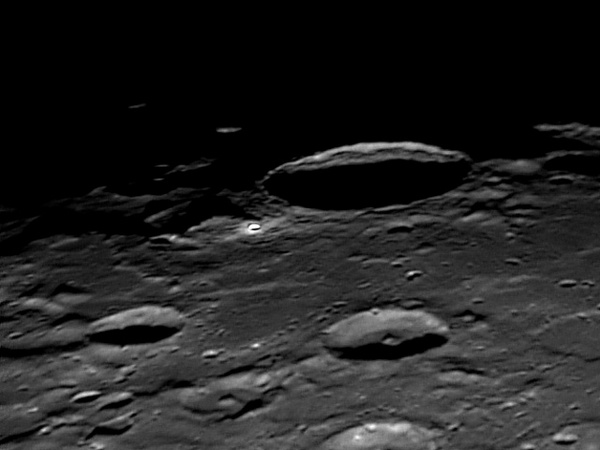
image by Fabio Carvalho, Brasil
This looks like a totally unfamiliar lunar landscape but many of us have seen it and never noticed it. If you looked at Langrenus when it was near the sunrise terminator you saw these craters. And if you observed Mare Smythii you probably saw them again. In fact, you even saw two of these craters on LPOD! But you still may not recognize la Pérouse, whose scarped rim rises above the terminator, and in the foreground, Kapteyn (center right) and von Behring (left). This is a non-distinctive area, scrunched between the Smythii and Balmer basins. Both Kapteyn (diameter 49 km) and von Behring (39 km) are standard little complex craters with terraces and central peaks. Except both are old enough that their terraces have been smoothed out, probably by shaking from subsequent impacts. What is remarkable here is the tiny diamond of an impact crater just northwest of la Pérouse. This 5.5 km wide pit is surrounded by a bright nimbus and must be fairly fresh. The bright spot is easily seen and provides an easy way to identify la Pérouse. It has long been known and is one of the bright spots that traditionally bears a letter: la Pérouse A. Back in the 1830s, Johann Mädler measured the position of a bright spot he saw as being separate from A, but Fabio’s image shows that the brightening is simply A’s ejecta splashed on nearby ridges.
Technical Details:
October 8, 2006; 04:54UT. Newtonian 10″ f/6 at f/16 + Philips ToUcam Pro II camera.
Related Links:
Rükl plate 49
Fabio’s website
Yesterday's LPOD: Rings Beyond Rings Beyond Rings
Tomorrow's LPOD: Old & New



